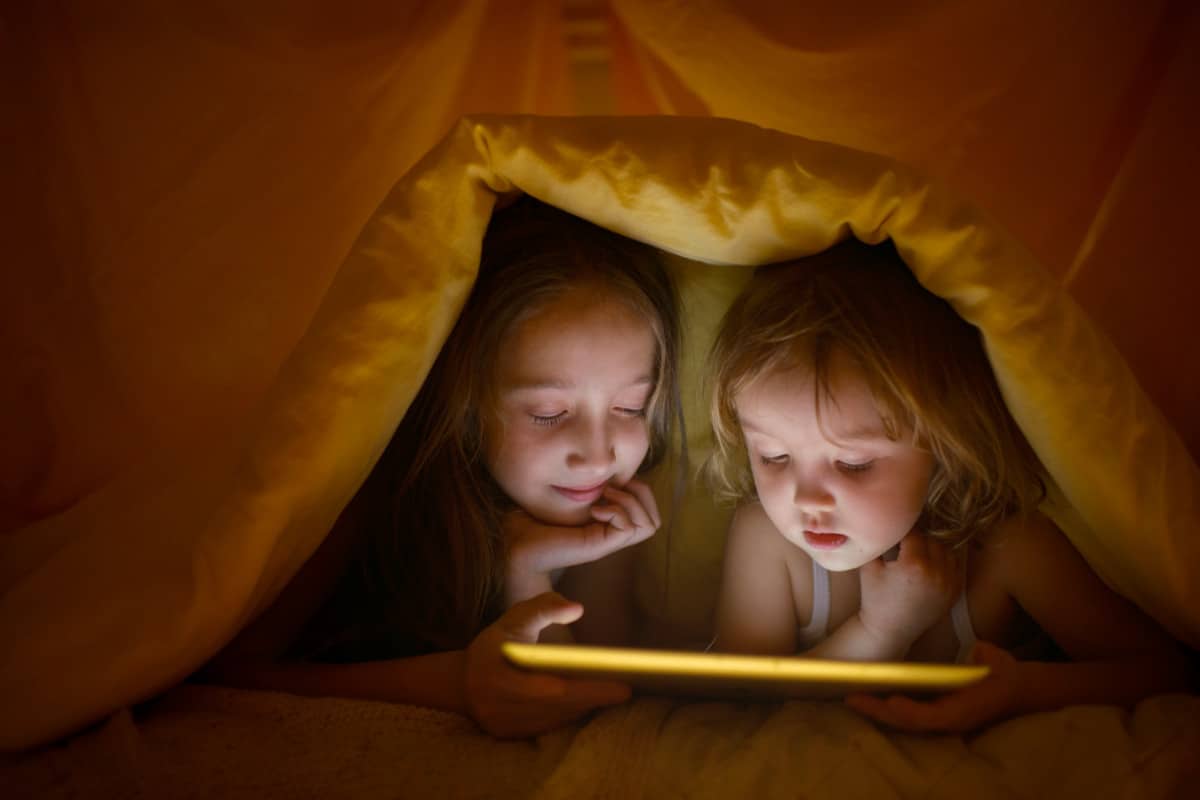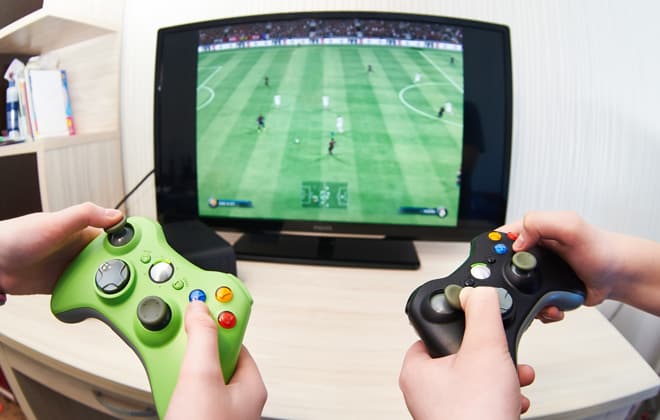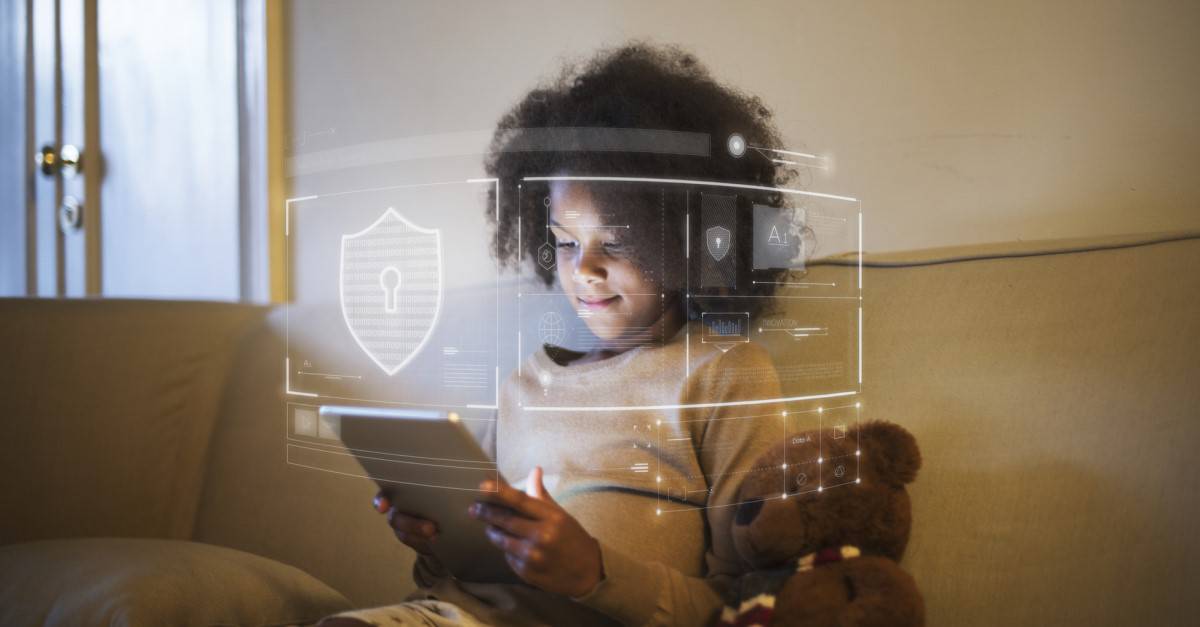Media Limits and Kids: Finding the Right Balance

With the switch to online school due to COVID-19, it’s difficult to set media limits on screen time for kids. But even with the extra screen time, there are some great ways you can set boundaries on their Internet use and screen time for entertainment.
Life in the Digital Age
Navigating life in the digital age with kids is no easy task. Between television, tablets, video games, and smartphones, different types of media provide can a break from constantly trying to keep your child entertained. But if you’re concerned about how much time your child is spending in front of digital media, you’re not alone.
In a study by Pew Research, 66% of parents in the United States say that parenting is harder today than it was 20 years ago–many citing technology as one of the main reasons. 71% of parents with children under the age of 12 are concerned that their child is spending too much time in front of screens.
With more and more kids’ activities now involving screens, the key to your child’s health is finding balance and moderation in how they spend their time!

What Are Some Types of Media?
With technology available at every turn, your kids can access media just about anywhere. It may be a YouTube channel, a kid’s show on your iPhone, a funny SnapChat, TikTok dance, an XBox game, or an animated movie on Netflix. It’s important to note that too much time with media can have an adverse effect.
Social media has emerged as a significant way that teenagers like to spend their time. According to Pew Research, in 2018, 95% of teens ages 13-17 say they have access to a smartphone, and 45% say they’re online “almost constantly.” Youtube, Instagram, and Snapchat are the most popular online platforms used by teens, although TikTok has emerged as a strong competitor, with creators targeting a younger audience.
What Are the Negative Impacts of Media on Children?
Whether it gives parents a break from the chaos, or it’s used as a learning tool, television and computer games used in moderation can have benefits. Many educational television shows and games can assist with memory, problem-solving, and learning.
However, multiple studies have shown the negative impacts of media that can hamper a child’s development.
Lack of Sleep
One of the main concerns with access to media is how it affects sleep. Blue light emitted by smartphones and tablets can inhibit melatonin production. Melatonin is a hormone that helps us fall asleep and stay asleep. Also, kids who are allowed electronic devices in their bedrooms may also be staying up later than they would normally. They may watching content, texting, or engaging on social media. Lack of sleep in developing brains can lead to a greater likelihood of issues like poor school performance, risk of obesity, and depression, and anxiety.
According to the CDC, teens who spent three or more hours a day on electronic devices were 28% more likely to get less than seven hours of sleep, and teens who visited social media sites every day were 19% more likely not to get adequate sleep. Studies also show that 8th graders who spend 10 or more hours a week on social media are 56% more likely to say they’re unhappy than those who spend less time.
Depression and Anxiety
Another concern is that the increased use of social media has weakened personal human connections. During COVID and times of self-quarantine in-person interactions aren’t always possible. But there’s a big difference between calling a friend versus seeing someone’s high-curated social media photos.
Most of us have a tendency to compare themselves to what seems to be the best version of others. This can lead to poor self-esteem, depression, and anxiety. Either way, the increased use of smartphones in the last 10 years has shown correlation to a significant increase in these symptoms in adolescents and adults alike.
While we can’t really avoid the fact that kids may have to learn online for a while, you may want to consider limiting their recreational screen time. Early data from a National Institutes of Health (NIH) study that began in 2018 indicates that some children who had over seven hours a day of screen time experienced thinning of the brain’s cortex (the area of the brain related to critical thinking and reasoning).

Protecting Your Child
When children have access to the internet and media platforms, they automatically become at higher risk to exposure to inappropriate content. Parents should be involved with setting up adequate media safeguards. Allowing screens and media with age-appropriate boundaries will ultimately prove to be the healthiest way you can approach the issue.
How Much Media Is Okay for My Kids?
The American Academy of Pediatrics recommends avoiding screens for children younger than 18 to 24 months. Although the occasional video chat with family is okay. The AAP also recommends limiting screen use for preschool children, ages 2 to 5, to just one hour a day. Try to stick to high-quality programming like Sesame Street or PBSkids. For ages 6-12, place consistent limits on time spent using media. Make sure it doesn’t interfere with physical activity or sleep.
There are some positive aspects of media use. For example, less than an hour a day of gaming was shown to increase prosocial behavior for kids ages 10-15. Teens and adolescents are spending less time engaging in risky behaviors outside the home and more time at home. However, as virtual interactions replace face-to-face interactions, risk becomes higher for feelings of loneliness and depression.
How Do I Keep My Kids Away from Screens?
It can be difficult to keep your kid away from screens, especially if they’re doing school online. Now, it’s more important than ever to make sure they’re finding ways to learn, play, and grow that don’t involve a screen. A healthy relationship with screens can make for a well-balanced, happier child.
- Set up limits on screen time. On iPhones, iPads, and Androids, you can even download an app like “ScreenTime” to set limits on the amount of time your child can spend on devices.
- Keep phones, tablets, and TVs outside of the bedroom. This helps encourage healthy sleeping habits. Encourage them to read before bed, as it’s much more positive effects on learning and brain development.
- Designate certain times as screen-free. Whether it’s dinnertime, family game night, outside time, it’s up to you when your child should or shouldn’t be allowed to use devices. Setting clear boundaries on when it’s acceptable to use devices can help create structure and a healthy relationship with media.
What Can Kids Do Instead of Watching Screens?
You’ve probably heard it once or twice: “I’m bored.” Constant access to technology and can makes other activities seem a little slower and less exciting. But, there are plenty of alternatives to television, computers, and smartphones, no matter what age. These activities are so important for physical, emotional, and social development!
There are lots of fun active games you can play with your younger kids. Go to the park, play a family game, or spend time doing crafts. Kids are also great at coming up with their own imaginative games and activities that can keep them busy for hours!
While older kids are more likely to be attached to their smartphones, try some more active activities for healthier outlets. They may want to play sports, read books, play an instrument, paint, go camping, or work on a new hobby.
Media and Kids: How Do I Make the Right Decisions?
In the midst of virtual learning, a little extra screentime is inevitable. This is temporary, and we’re all just trying to do what’s best for our families and our own mental health. With that in mind, establishing boundaries and limits with screen time consumption can help establish healthy relationships. Do you have great ideas to limit kid’s screen time? Let us know in our comments section. Be sure to use FamilyApp as a healthy way for your children to engage with technology.





